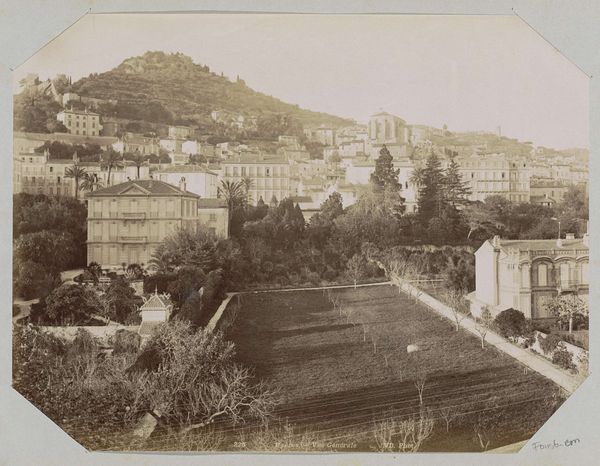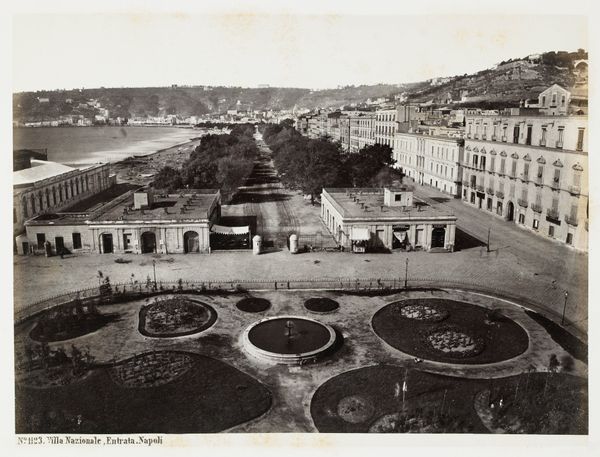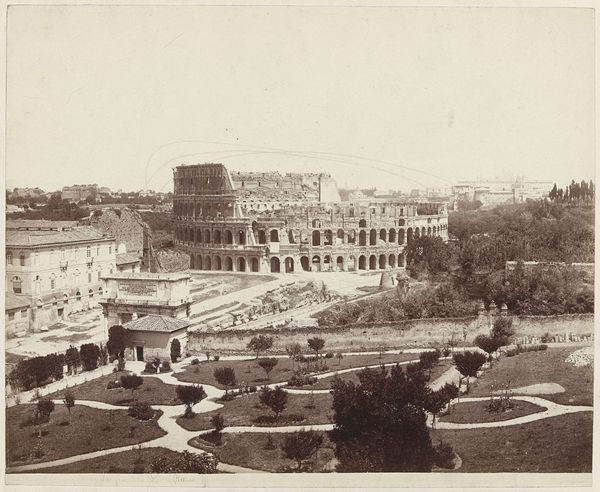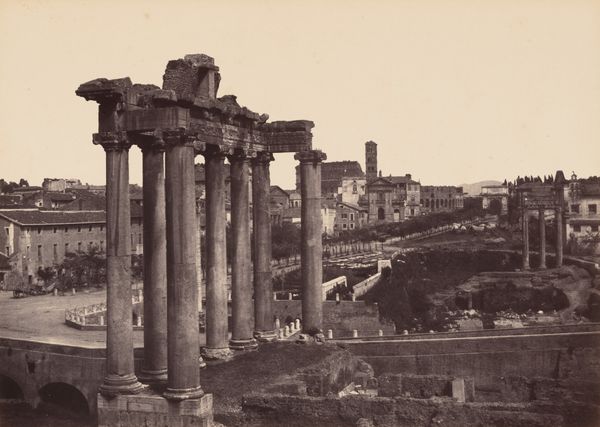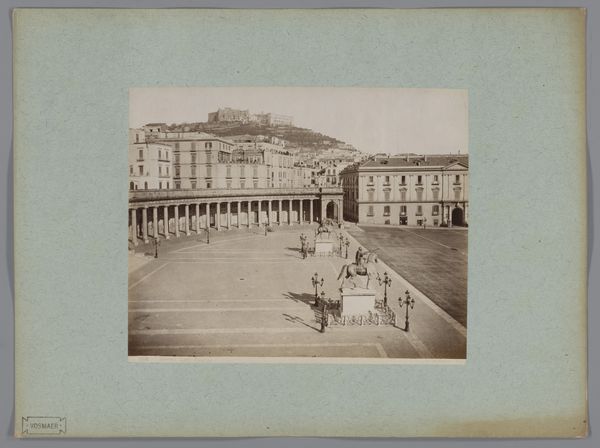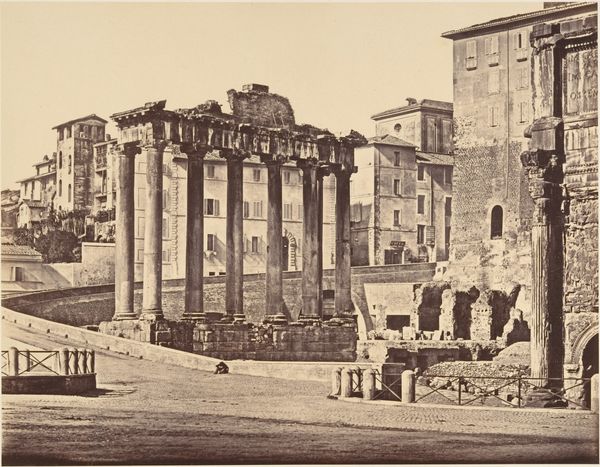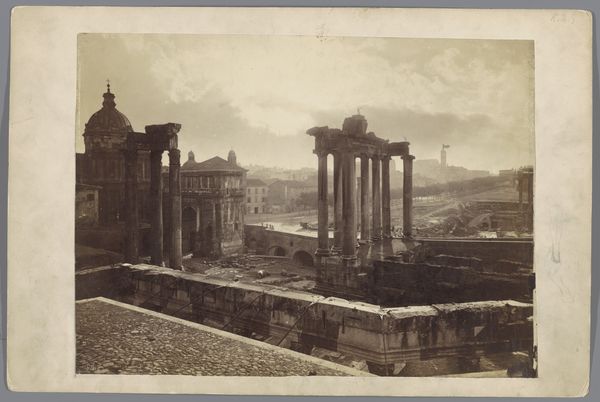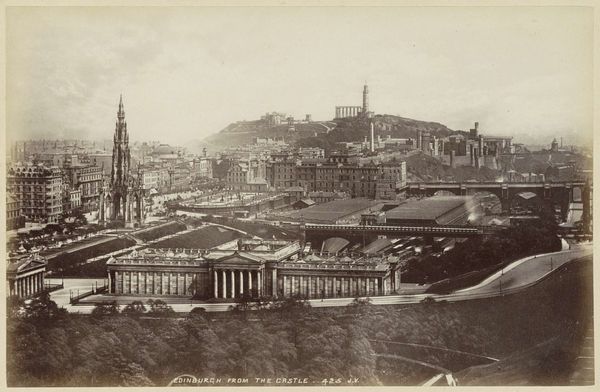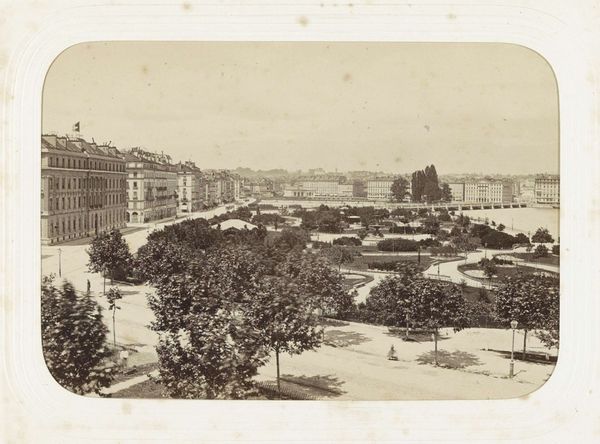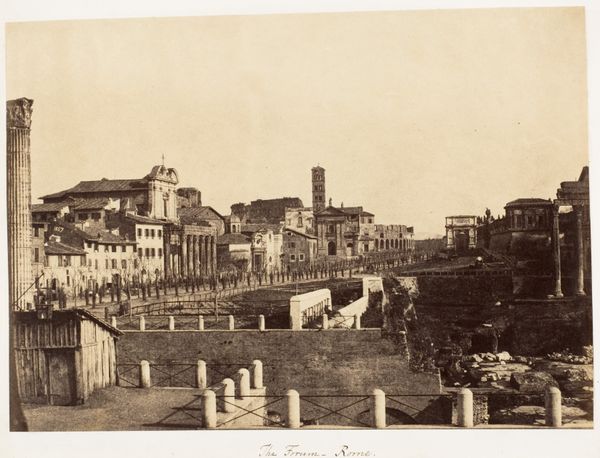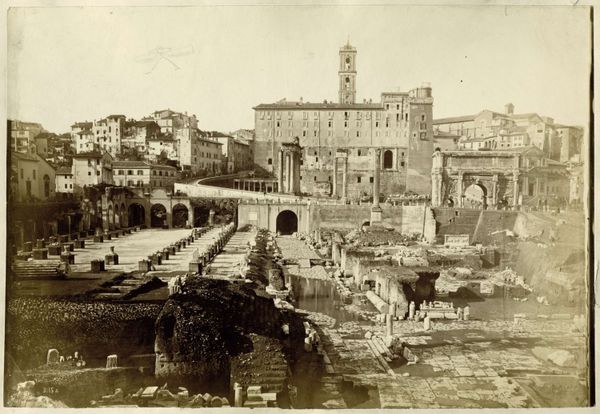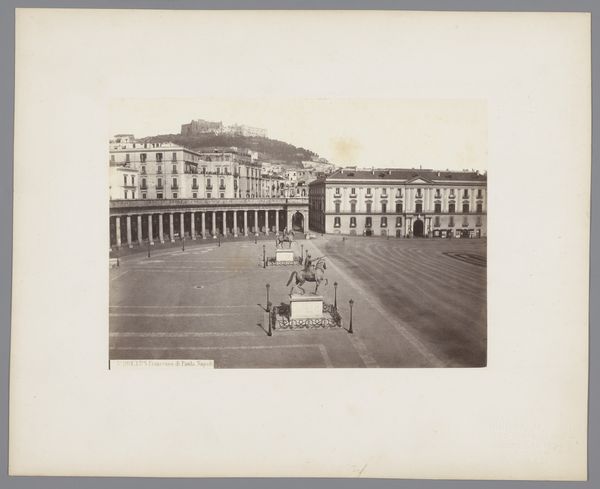
albumen-print, print, photography, albumen-print, architecture
#
albumen-print
#
architectural landscape
# print
#
landscape
#
photography
#
cityscape
#
albumen-print
#
architecture
#
realism
Dimensions: 7 11/16 x 9 15/16 in. (19.53 x 25.24 cm) (image)10 7/8 x 13 7/8 in. (27.62 x 35.24 cm) (mount)
Copyright: Public Domain
Editor: Here we have Giorgio Sommer’s “Genova,” an albumen print from the 19th century. The scale of the architecture is what struck me first; how do you read this cityscape? Curator: The albumen print process itself is key here. Think about the labor involved: coating the paper, exposing the negative, the chemical baths… It’s a far cry from our digital snapshots. Editor: So, you're thinking about the… physical effort. Curator: Absolutely! And how that shapes the final image. Look at the detail, the tonality – achieved through painstaking work. It wasn't just about capturing a scene. What materials do you see within the print that echo these values? Editor: Well, the architecture, obviously: stone, iron… permanent materials. This must speak to the value of…labor…back then, of craftsmanship. The ships indicate trade – labor, and also colonial activity. Curator: Precisely! The city is being produced, and reproduced in the print. What is consumed from the labor here versus shown within the subject matter itself? This harbor isn't just picturesque; it's a hub of industry. How might Sommer have been implicated in that, producing images for a market that romanticized it? Editor: Interesting, so even Sommer’s artistic labour, the selling of this very print… Curator: Impacts how we see this. How consumption mediates this depiction. The material conditions of its production – albumen printing in the 19th century – are all linked to social and economic factors that need examining. The albumen in the print is directly derived from egg whites as the product and waste streams are often aligned! Editor: I never considered photography like that, the impact on markets and consumption. It offers a new way to view familiar themes like cityscapes. Curator: Indeed. Seeing art as tied to its means of production, its place within material culture opens it up immensely.
Comments
No comments
Be the first to comment and join the conversation on the ultimate creative platform.


